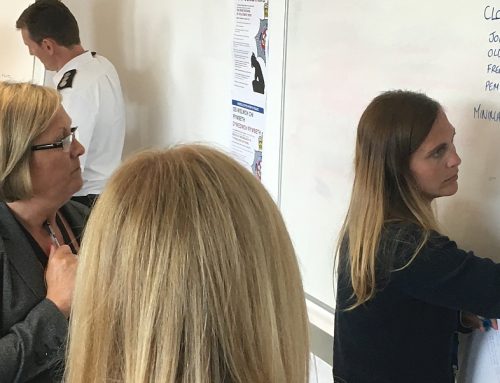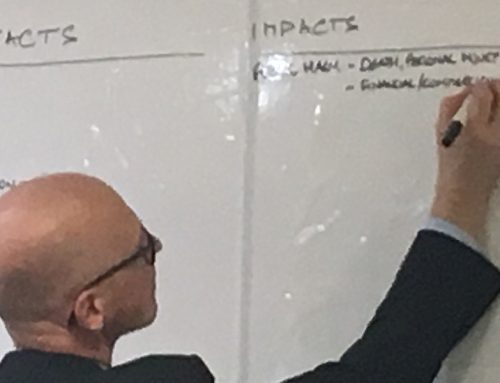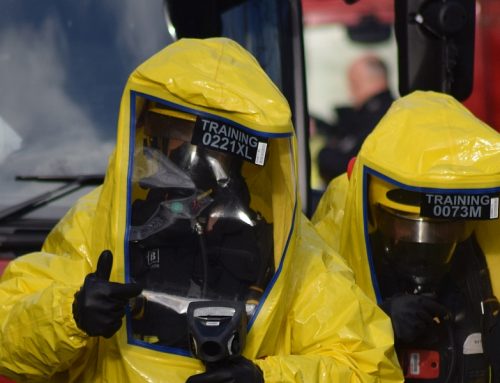Real competence development relies on maximising training transfer – the degree to which people apply the knowledge, skills and experience from the training context back to their job. A good level of training transfer is essential if organisations are to obtain value for money from their investment in training. But organisations often don’t evaluate the impact of their training programmes to any great extent, with over a third simply relying on basic delegate satisfaction surveys as the only means of evaluation. This is surprising considering the amount of money invested in training each year.
In the current environment, we are seeing organisations increasingly wanting to look more closely and understand the effectiveness of their training programmes to ensure they are getting value for money. Interestingly, these organisations are also looking to implement changes that increase the likelihood of training transfer occurring. They are genuinely interested in developing their people and they want to know they are getting the results they are paying for. This means allocating resources to a more detailed approach to training evaluation but the benefits of doing this are higher levels of training transfer, better value for money from the investment and increased capability on the job, which is the whole idea in the first place.
How to manage competence development
Research suggests that training transfer declines as time progresses; 62% of training is used immediately after the course, dropping to 44% after 6 months and 34% after one year. This means organisations face an ongoing challenge to maintain capability. Add to this changes in personnel, roles and responsibilities, people starting and leaving, promotions and so on, and the result is that capability for tackling emergency situations tracks up and down. We describe this as a ‘saw-tooth profile’ of competence development.
To address this problem we recommend that organisations implement competence development and maintenance training programmes using training records, formal evaluation and forecasting. Managing the training programmes in this way supports the competence development of your people, increasing their knowledge, skills and experience, rather than merely ticking boxes and competence remaining static and often dropping. A properly resourced approach to competence development not only increases the capability of your people and therefore performance in their roles, it also allows budget holders to demonstrate return on investment.
Using training evaluation to enhance competence development
To demonstrate that our training interventions develop competence and deliver value for money and a return on investment, we first complete an initial evaluation of delegate satisfaction and further information regarding the efficacy of the course using a survey that includes both quantitative and qualitative elements.
We also have unique emergency and crisis management competency frameworks that allow us to map the training needs of a team to identified competencies. We use these to conduct an objective review of the training and how successfully delegates transfer the learning. We also gather follow up data, again using quantitative and qualitative methods, and evaluate the training in terms of its efficacy in shaping long-lasting individual, team and organisational emergency response capability.
Taking this approach to training evaluation leads to recommendations for interventions to improve training transfer and therefore value for money and return on investment. For example we often make recommendations around what could be done to further support delegates to apply their learning.
What makes the difference?
Eddistone Consulting have drawn together a team of specialists who have extensive collective experience, coming from industry, the emergency response services, the multi-agency response community, health & safety and education backgrounds, to develop and deliver a competency-based training and exercise framework with identified performance deliverables to measure effectiveness and assure competence.
We use a proven systematic approach that explores how to respond. We have core methodologies for each response level of Emergency, Incident and Crisis (Operational, Tactical and Strategic) management. The credibility and reality of our exercises, experienced in a safe environment where real learning takes place, is always valued by our customers.
How we can help
We recognise that many of our clients, especially in the COMAH-regulated sector, are under pressure to maintain mandated emergency management capacity. We are committed to providing you with emergency management support wherever possible throughout this pandemic. This is important to ensure that you do not fall behind with your scheduling backlog and to maintain the required capacity, despite the impact of absence and illness on safety-critical roles. We have two strategies to help you achieve this:
1. We have developed remote methods for training and assessment, coupled with remote mentoring for the development of key roles. This facilitates accelerated learning and makes the best use of technology and advanced learning practices.
2. We have a pool of experts ready to provide direct support, both remotely and in person, to reinforce capacity and mentor your existing capability. Our team of experts is ready to stand alongside your key emergency response personnel.
Contact us to discuss how we can help you.
Eddistone Consulting Ltd.





